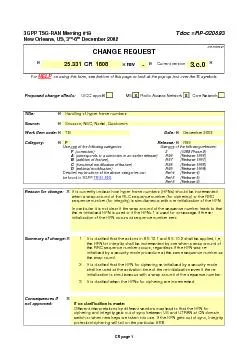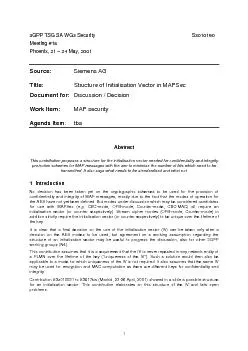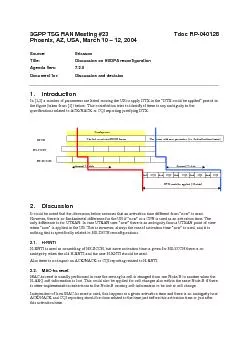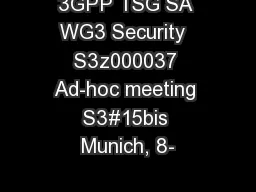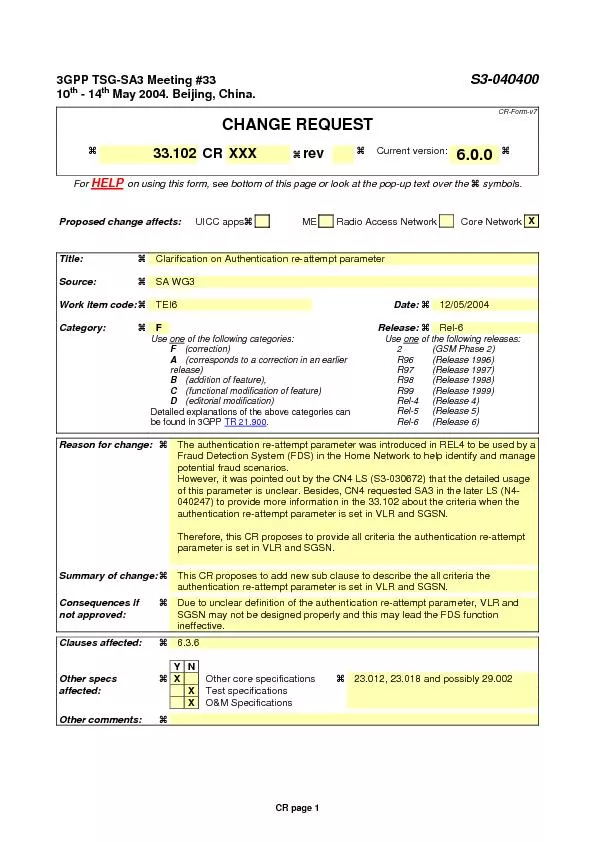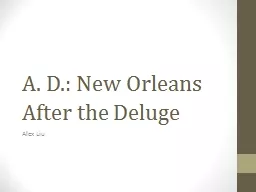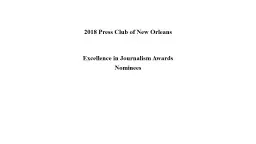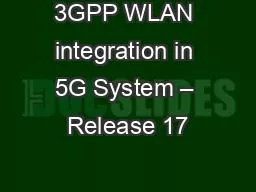PDF-3GPP TSG-RAN Meeting #18 Tdoc New Orleans, US, 3 December 2002 CR-Form
Author : ellena-manuel | Published Date : 2015-10-08
CHANGE REQUEST 3c0 For on using this form see bottom of this page or look at the popup text over the symbols Proposed change affects UICC apps Radio Access Network X Core
Presentation Embed Code
Download Presentation
Download Presentation The PPT/PDF document "3GPP TSG-RAN Meeting #18 Tdoc New Orlean..." is the property of its rightful owner. Permission is granted to download and print the materials on this website for personal, non-commercial use only, and to display it on your personal computer provided you do not modify the materials and that you retain all copyright notices contained in the materials. By downloading content from our website, you accept the terms of this agreement.
3GPP TSG-RAN Meeting #18 Tdoc New Orleans, US, 3 December 2002 CR-Form: Transcript
Download Rules Of Document
"3GPP TSG-RAN Meeting #18 Tdoc New Orleans, US, 3 December 2002 CR-Form"The content belongs to its owner. You may download and print it for personal use, without modification, and keep all copyright notices. By downloading, you agree to these terms.
Related Documents

